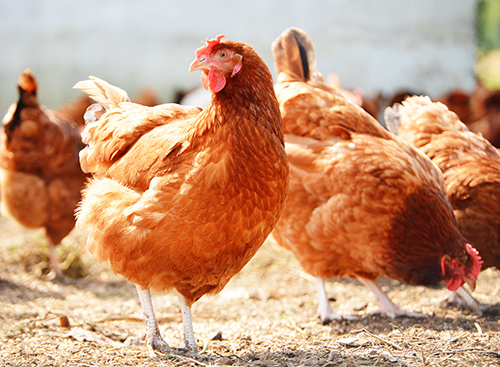Rhode Island Red Chickens
Feb 15, 2021

Rhode Island Reds are one of the most popular chicken breeds for backyard flocks for a variety of reasons. They are dual-purpose, which makes them perfect for small homesteads, as well as amazing layers of large brown eggs. In fact, a well-fed Rhode Island hen can lay as many as six to seven eggs a week. They are very hardy in a variety of climates and many say their “RIR” hens to be exceptionally docile.
The popularity of this breed has led to excellent availability from most hatcheries, mail-order services, and feed stores. However, these Rhode Island Reds are an industrialized version of the original breed, which the American Livestock Breeds Conservancy lists as recovering. An easy way to tell the difference between the modern interpretation of the breed versus the original “pure” breed is to observe the color of the plumage. The original Rhode Island Red sports a very deep, dark, rich, mahogany-like color. Most Rhode Island Reds from hatcheries or in feed stores, which are the same Rhode Island Red variations found at many commercial egg farms, have much lighter red plumage similar to rust. Both types of birds are beautiful and productive, so unless you want to show your birds competitively, become a breeder, or help the original breed recover, there is nothing wrong at all with the new version.
One trait that a number of owners have reported with this breed is that they can be especially vocal. This can, of course, vary by individual bird. Several reports in forums and blogs online, however, seem to note similar noisiness from their Rhode Islands.
The chicks of this breed are a soft rust color with two dark lines running down their backs. As they begin to grow, their feathers develop patterns of rust and black, but these patterns don’t carry over into maturity. Full-grown Rhode Island Red hens will weigh about 6.5 pounds and have yellow legs and feet, red/orange eyes, and a red/brown beak. Their color will vary from darker red/brown to a light rust, and some hens will exhibit dark black/green tail feathers. Roosters are larger, weighing in at around 8.5 pounds, and generally have darker mahogany red/brown plumage with dark green tail feathers. This breed sports a single comb.
Rhode Island Reds are a truly American breed, having been developed in Rhode Island and Massachusetts. In fact, the Rhode Island Red is the official bird of Rhode Island. In addition, there are not one, but two monuments to the breed in the state of Rhode Island — one in Adamsville and one in Little Compton.
Want to learn more about all things poultry? Stop by your local Co-op. Find your nearest local Co-op here.